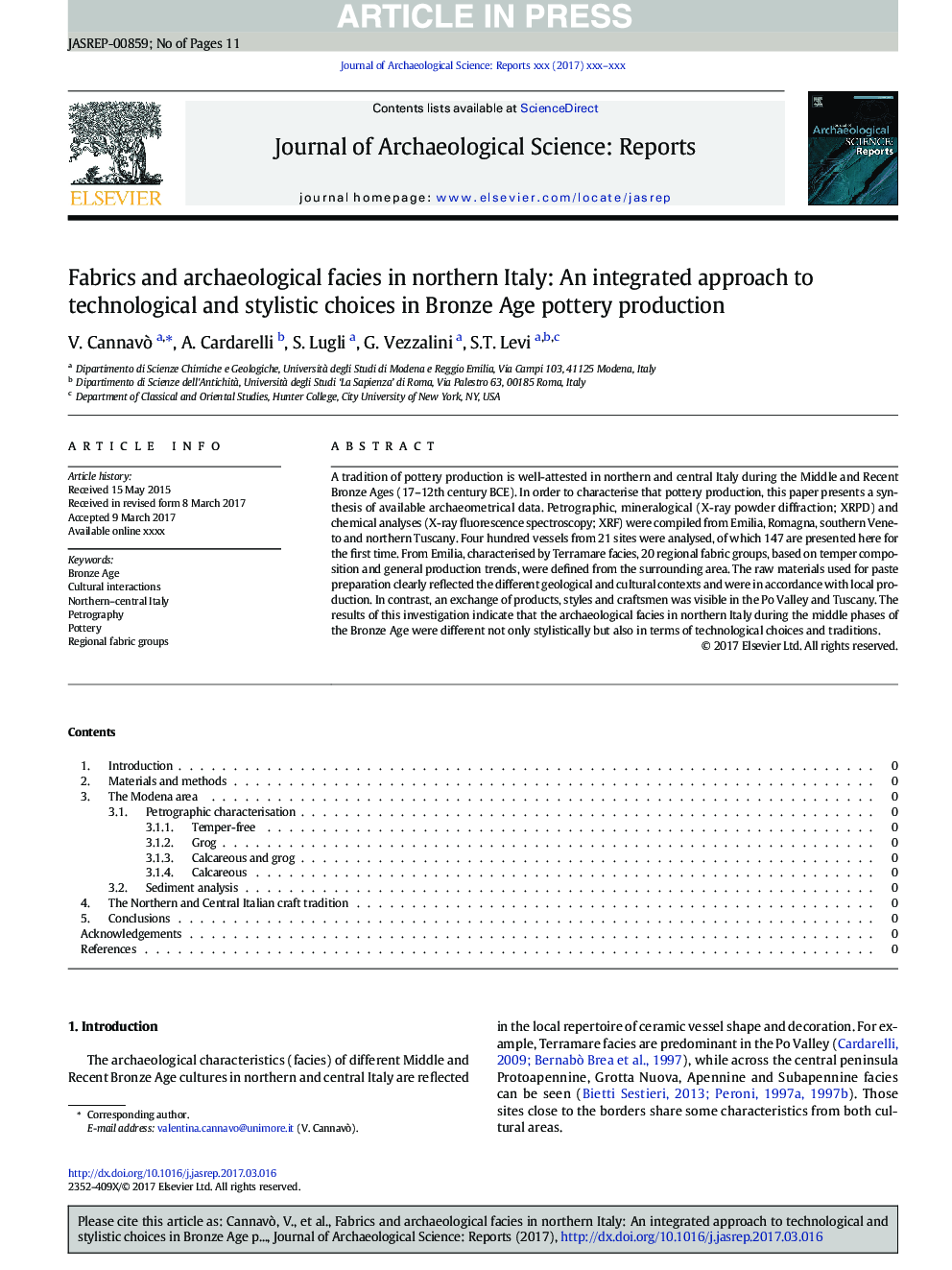| Article ID | Journal | Published Year | Pages | File Type |
|---|---|---|---|---|
| 7444956 | Journal of Archaeological Science: Reports | 2017 | 11 Pages |
Abstract
A tradition of pottery production is well-attested in northern and central Italy during the Middle and Recent Bronze Ages (17-12th century BCE). In order to characterise that pottery production, this paper presents a synthesis of available archaeometrical data. Petrographic, mineralogical (X-ray powder diffraction; XRPD) and chemical analyses (X-ray fluorescence spectroscopy; XRF) were compiled from Emilia, Romagna, southern Veneto and northern Tuscany. Four hundred vessels from 21 sites were analysed, of which 147 are presented here for the first time. From Emilia, characterised by Terramare facies, 20 regional fabric groups, based on temper composition and general production trends, were defined from the surrounding area. The raw materials used for paste preparation clearly reflected the different geological and cultural contexts and were in accordance with local production. In contrast, an exchange of products, styles and craftsmen was visible in the Po Valley and Tuscany. The results of this investigation indicate that the archaeological facies in northern Italy during the middle phases of the Bronze Age were different not only stylistically but also in terms of technological choices and traditions.
Keywords
Related Topics
Social Sciences and Humanities
Arts and Humanities
History
Authors
V. Cannavò, A. Cardarelli, S. Lugli, G. Vezzalini, S.T. Levi,
